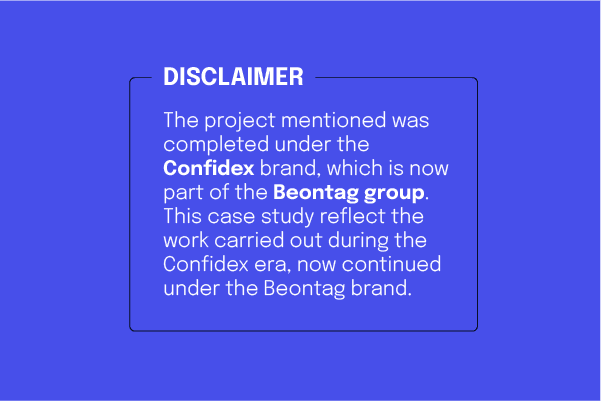
Smart Mobility
How The Glasgow Subway Modernized Ticketing with RFID Solutions
Smart Mobility
Dutch Railways (NS) have implemented an automated solution that increases the flow of bicycles going in and out of bicycle parking facilities. The solution, developed with Confidex and Siemens, eliminates the use of the travel card and includes a payment process when exiting the facility. The solution is co-financed by the Connecting Europe Facility.

Dutch Railways (NS) have implemented an automated solution that increases the flow of bicycles going in and out of bicycle parking facilities. The solution, developed with Confidex and Siemens, eliminates the use of the travel card and includes a payment process when exiting the facility. The solution is co-financed by the Connecting Europe Facility.
Challenges
Benefits
Nederlandse Spoorwegen (NS) – Dutch Railways in English – is the Netherlands’ principal passenger railway operator, founded in 1938. The Dutch Railways network is one of the busiest in the world connecting the cities and small towns of the Netherlands. NS serves 1.3 million passengers and operates 4,800 scheduled domestic trains daily.
On average 40% of travelers use a bicycle to travel to the railway station. In fact, with a large percentage of Dutch residents using their bicycles for most transportation, Netherlands’ cities and villages include infrastructure to support riders, including cycle paths and bicycle parking. NS is no exception. Many of its passengers secure their bicycles in dedicated parking facilities at the station where they begin their public transit journey to work, shopping or entertainment.
Often, especially during rush hour, the parking & payment process was too slow, requiring additional waiting space for travelers. So NS planned an automated solution to provide fast, easy check-in and check-out for cyclists. The organization received funding from the European Union for this development. To explore the options and develop a solution that makes parking at the bicycle facility even easier, the company created its NS Bike Innovation Lab.
“NS developed its access system iteratively, learning step by step how to achieve highest customer convenience and improve flow rate as passengers enter and leave the station”, explains Dick Woudenberg, NS Stations’ Product Owner of the Product Team Guarded Bicycle Parking.
The project came with some challenges. The proven best solution for the access system, would not have doors that regulate that regulate cyclists’ passage, so the system needed to detect when someone leaves or enters the system.
While RFID technology was chosen as the most effective solution, reliable operation of an RFID-enabled bike tag on the various types of bicycles was a challenge. Bikes include a variety of materials and designs and can come with additional features such as racks on the handlebar. Because the City of Amsterdam also wanted to use Bike tags for its parking facilities, they jointly developed the bicycle tag in such a way that the Bike tags can be used in parking facilities of both parties (interoperable).
Therefore, the company had to select the optimal tag and reader that would capture tags on any style of bike. Through the tender, the choice was made to leverage a design know-how of Confidex and its unique DesignStudio service for fully customized on metal label. The new tag solution offered the best performance at the best price and a very compact design. NS built new check-in-and-out terminals with RFID-reader, with support from Siemens.
“With our unique co-creation process Confidex designed state of the art tamper proof on-metal label” says Paul Broekhuizen, Executive Vice President Smart Industries. “NS and many other customers appreciate our pre-defined process of designing and manufacturing unique RFID tags fulfilling challenging customer requirements”

At the center of the solution is the NS bike tag which cyclists attach to their bike. With the tag, passengers are able to enter the parking facility and leave with their bikes without stopping or being interrupted. A green light confirms they are authorized to proceed, and they continue into the bicycle parking facility. That’s it. In the meantime, the RFID reader captured the bike tag and transferred this to the computer system.
When leaving the station passengers simply collect their bike, walk through the RFID reading terminal. When the bike has parked for more than 24 hours the owner is prompted to pay at the self-serve console.
“Thanks to the NS Bike tag, customers can go through without interruption,” says Woudenberg. “Customers can now also pay without the assistance of the employee in the parking facility. Queues are kept to a minimum at peak times and employees have time to welcome customers and provide service where necessary.”
